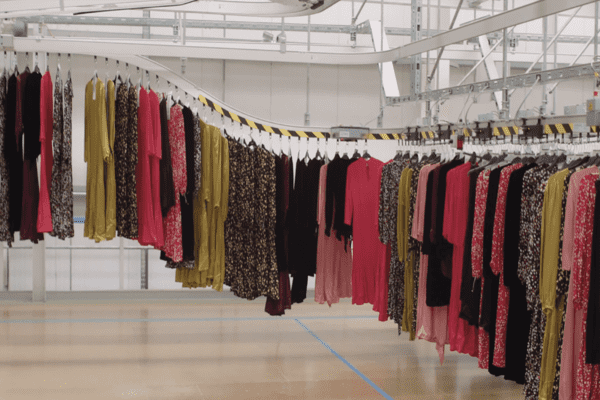That M&S made net sales of £100m from marketplaces last year might come as a surprise to the average UK shopper. After all, the high street homewares to fashion retailer has no presence on UK marketplaces. But M&S’s international business is steadily building its position in Europe, Asia and the US through a wide range of marketplaces. Why? And how?
Tom Flintoff, head of marketplaces, International ecommerce, at M&S, was a keynote speaker at ChannelX World last week, where he shared insights into the retailer’s marketplace strategy.
Why M&S is selling on marketplaces
Marketplace sales account for a very small share of M&S sales, which reached £10.9bn last year. Rather, says Flintoff, the retailer sees it direct to consumer sales growing alongside marketplace sales. For M&S, marketplaces are essentially a brand awareness tool – and especially so in markets where it has very little existing presence.“When we’ve launched on the marketplaces in different regions, we’ve seen some great data that suggests that’s working,” says Flintoff. “M&S brand searches in Google go up. Our D2C sales go up. We don’t really see any reason, especially when we have such low market share, to not continue this approach.”
How M&S approaches marketplaces
Currently the retailer is in its first phase – test and learn. From here it will move onto optimising its trading presence on marketplaces. Within three years of launching its marketplaces business – or two years from now – the target is to make a profit. That, says Flintoff, will mean big changes to the way its business operations. “We’ll definitely not stay in marketplaces just for sales,” he says. “We have got to make a profit from it – as I’m sure applies to others.”
The approach starts by deciding which marketplaces to sell on. The marketplaces that M&S prioritises meet criteria, including whether it can win in that market, and how big the prize for doing so will be. In Europe, for example, it would look fo marketplaces that sell in more than one region, where it already has brand recognition and, initially, that focus on fashion. Currently, it sells on Zalando in Europe and on Amazon in the US. But it sells via many more in Asian markets, from Zalora in South East Asia to Myntra in India and beyond, operating through partners or franchise models.
Then, a decision has to be made about what operating model to use in which regions. That could mean selling wholesale to the marketplace or fullfiling products itself, whether by drop shipping or stocking products in the region. In Indonesia, for example, products are shipped from store.
Challenges
“A small army of people” runs M&S’ presence on marketplaces in a variety of regions, says Flintoff. “It’s really hard work to make £100m.” The international marketplace spends much of its time working out how to automate processes. But as yet many of those still operate via manual tools such as the Excel spreadsheets, used to track the stock that’s being bought for different markets.
Getting the customer assortment is another main challenge. The retailer started out by choosing lines that sold well in the UK. In all, it has more than 150,000 fashion SKUs (stock-keeping units). But getting the assortment right has proved difficult. That’s more difficult when marketplaces don’t offer insights into who buys from their platform – and easier when they do. “With a company like Zalando we’ve got a lot more insight, you know, they have their own customer segmentation, based on fashionability, and metrics, so you can start to really, really target whoever,” says Flintoff. “You start to realise GenZ customer is a broad customer base. There’s lots of different aspects.” Now, he says, the retailer doesn’t target people or segments but by life stage and fashionability. “So we have got to be clear about who we are targeting on our marketplaces. And we just need to push the marketplace as much as possible for that information.”
Profitability is the final challenge. But, says Flintoff, the decision that the business had three years to become profitable gave it much more room to test and learn.
Opportunities
The ultimate opportunity is that of building thriving businesses beyond the UK that may compensate for difficult times closer to home. “Europe is tough,” says Flintoff, “but we’d like to accelerate in Europe quicker. That’s where the challenge is. But the Indian business is exceeding expectations. Southeast Asia, just an untapped opportunity. And so I think those regions can more than make up where we may be suffering here for the next 18 months.”
Marks & Spencer is a Leading retailer in RXUK Top500 research.










